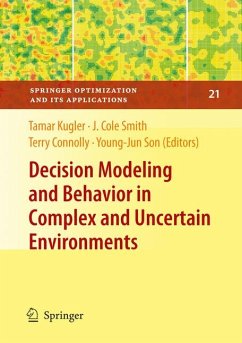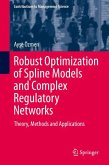The main broad topics include:
·the integration of decision analysis and behavioral models
·innovations in behavioral models
·exploring descriptive behavior models
·experimental studies
From the cognitive behaviorist who collects empirical evidence as to how people make decisions to the engineer and economist who are the consumers of such understanding, the reader encounters the familiar Traveling Salesman Problem and Prisoner's dilemma, how agricultural decisions are made in Argentina's Pampas region, and some social goals that come into play as an element of rational decision-making.
Decision Modeling and Behavior in Complex and Uncertain Environments will benefit graduate students, mathematicians, engineers, psychologists, and other scientists.
Dieser Download kann aus rechtlichen Gründen nur mit Rechnungsadresse in A, B, BG, CY, CZ, D, DK, EW, E, FIN, F, GR, HR, H, IRL, I, LT, L, LR, M, NL, PL, P, R, S, SLO, SK ausgeliefert werden.









